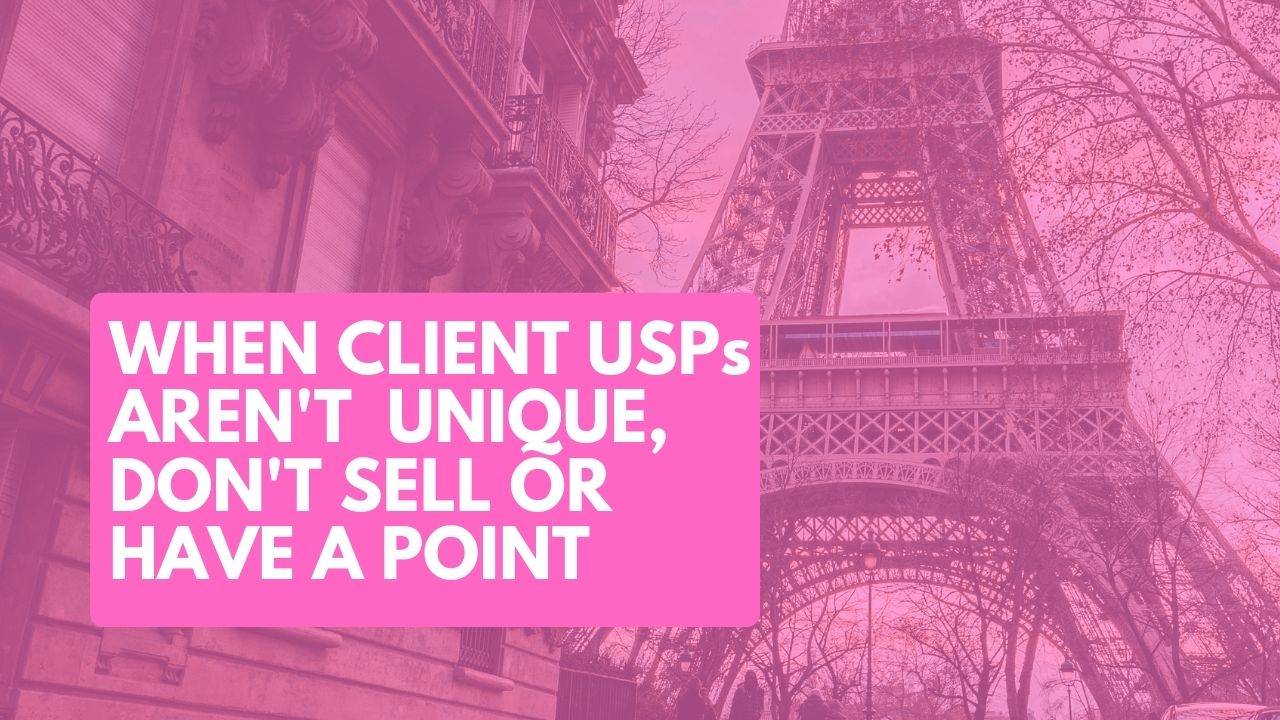The unique selling proposition or point (USP) has been around in marketing since the 1940s. The USP (especially the ‘selling’ part of the name is often placed within the 4 P’s of marketing (Product, Price, Place, Promotion) and as such may seem a bit too old-school/hard sell for some.
Whilst the USP is still a well-known and widely taught concept, it has perhaps seen better days and often been eclipsed by more modern terms, such as unique point of difference (UPD), value proposition or differentiation.
I encourage the creation of USPs with my clients – B2B owners, or marketing and sales staff – as a thought experiment that I associate with more upstream concepts than the 4 P’s. I place this kind of exercise at the level of market research and market orientation.
By asking clients to challenge aspects of their own service/company, I’m encouraging them to step away from their perceptions and rethink their position in the market. Even if you have a company that has been going for several years, you can do this exercise to address issues such as slow growth, a lack of leads or a feeling of not being competitive.
Below are a few ideas to help you use USPs to analyse your marketing problem. I usually aim to identify USPs that combine all the ideal features described below. That may not be possible and we shall take what we can get from the exercise.
A USP should not be superficial
Most clients find it hard to make truly unique statements about themselves. It’s the resume-effect that few people enjoy talking about themselves and, by extension, reviewing their own company’s existence. Many clients will try to get through this exercise quickly and will say the first thing that comes into their head; that ‘[company] is the only [website developer] in [Paris] run by a business owner named [founder’s name]’.
Technically is this a unique statement ? Yessss. But it’s unhelpful for the exercise and I could always counter that this instance could actually occur.
So one stipulation for a USP is that it be a statement that cannot be replicated by a low-grade coincidence.
A USP has to be relevant to the purchasing of your service
The ‘selling’ part of the unique selling proposition should mean that the proposition has some relevance to the buyer’s interests. My example of a USP above, again, doesn’t really qualify: might a Parisien buyer want to use a web developer based in their city? Definitely. Is my client’s company the only developer in the city? No. Would they be the only developer in their arrondissement? Maybe. Is that relevant? We would continue to drill down on the question.
A USP should ideally be truly unique
If we aim for a USP to be unrepeatable in any circumstances, then we have an unassailable position. A patent, intellectual property, an internal process, an exclusive contract.
It may not be a selling position but the exercise will have value for revealing how vulnerable the client is to having their market taken away from them.
Your USPs may not make it to your marketing campaigns
It’s unlikely but true. If the only USPs that can be found are centred around a little-used service, and the client doesn’t want to build their future on that service, then don’t reference it.
Your B2B service may not have a USP
It happens. This realisation may lead to some awkward silences when talking about competitive advantage. Can you be successful without any USPs? Yes.
What do I do with USPs that aren’t USPs?Get them out of your sales pitches because you might be repeating tired tropes that are merely wasting your leads’ time.
If I get a client at this stage, then I can help create USPs either from the offerings my client already has or to reframe their service or encourage the development of new offerings.
